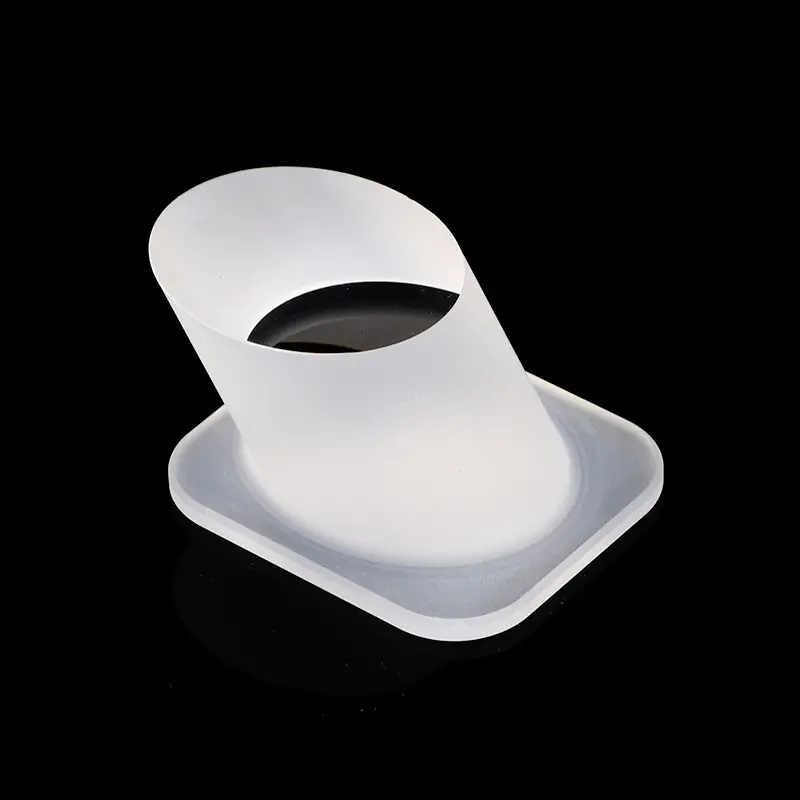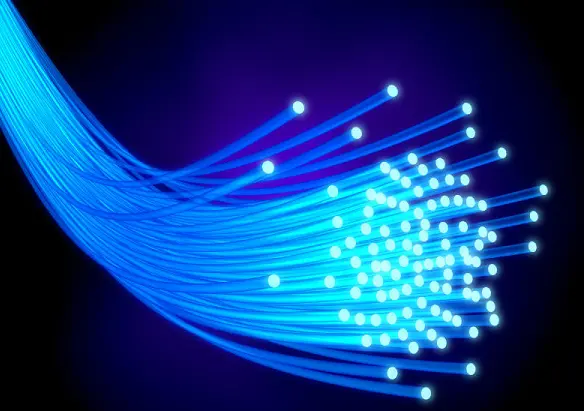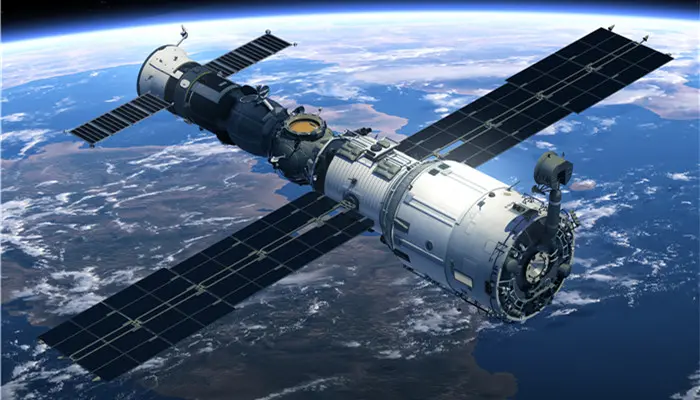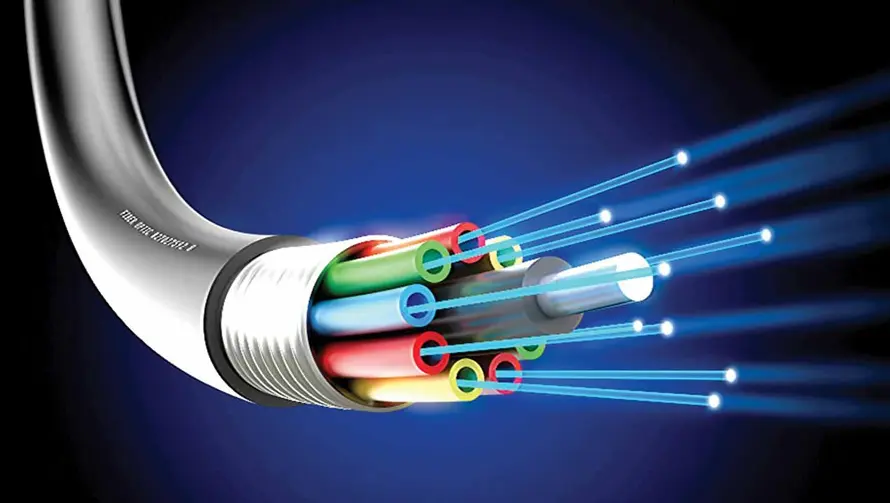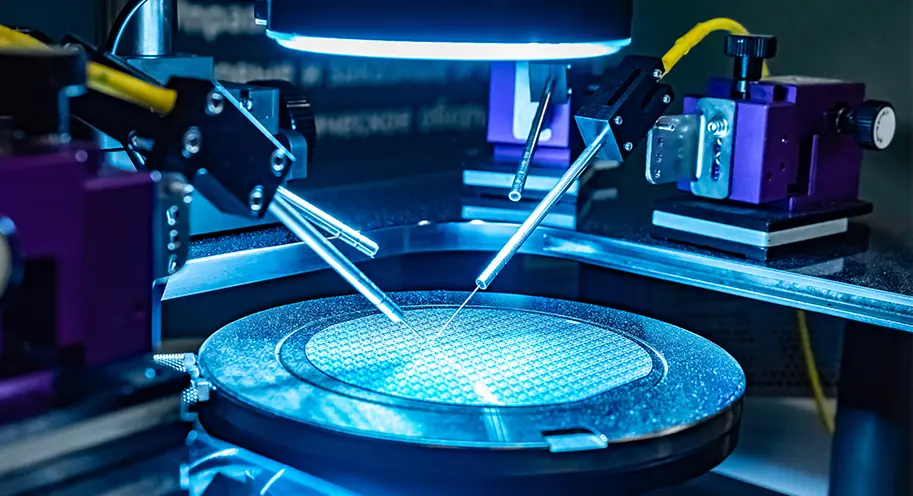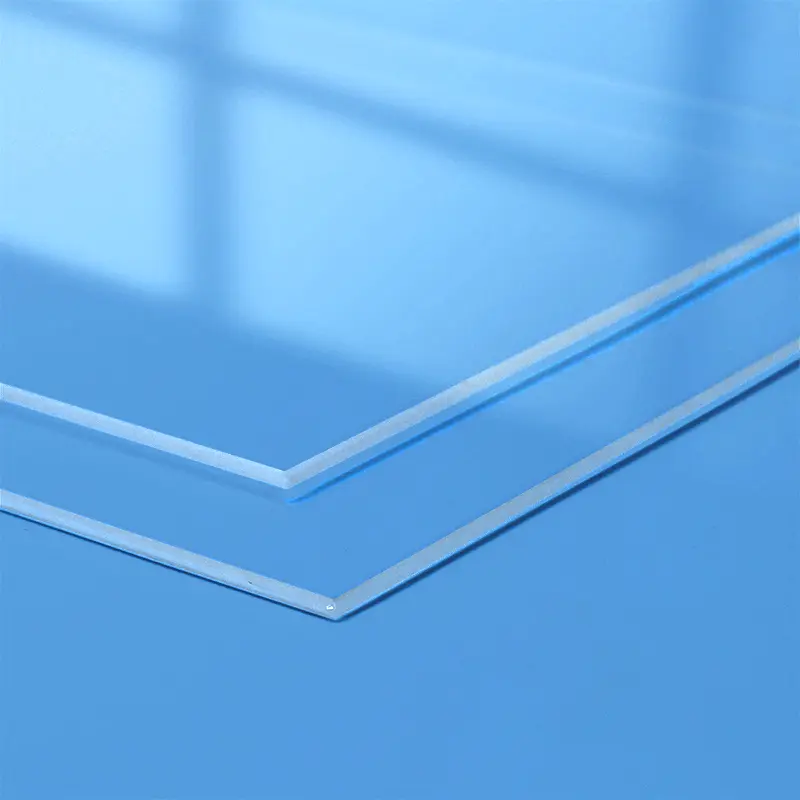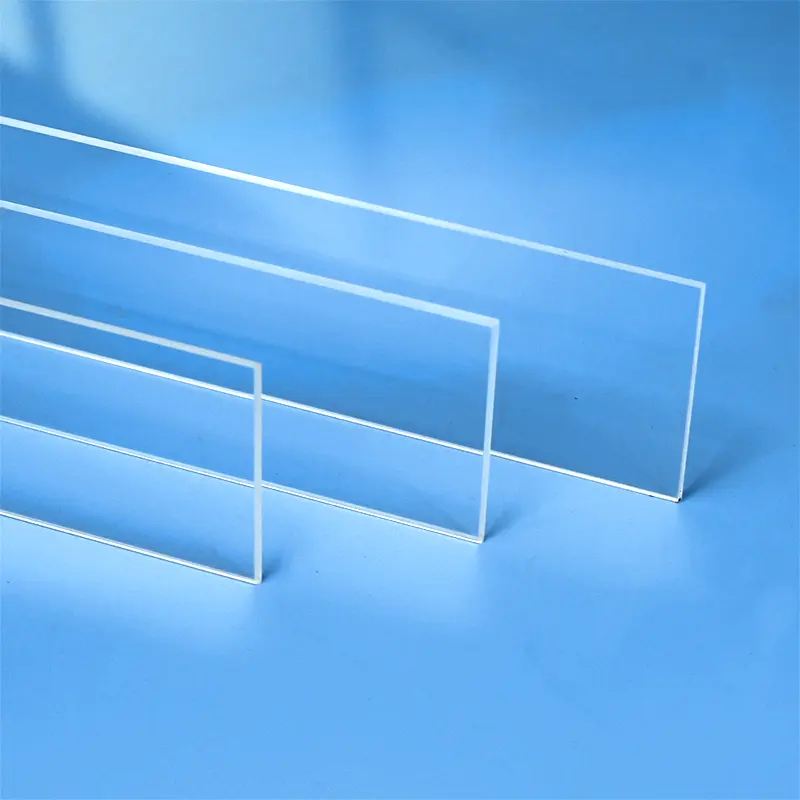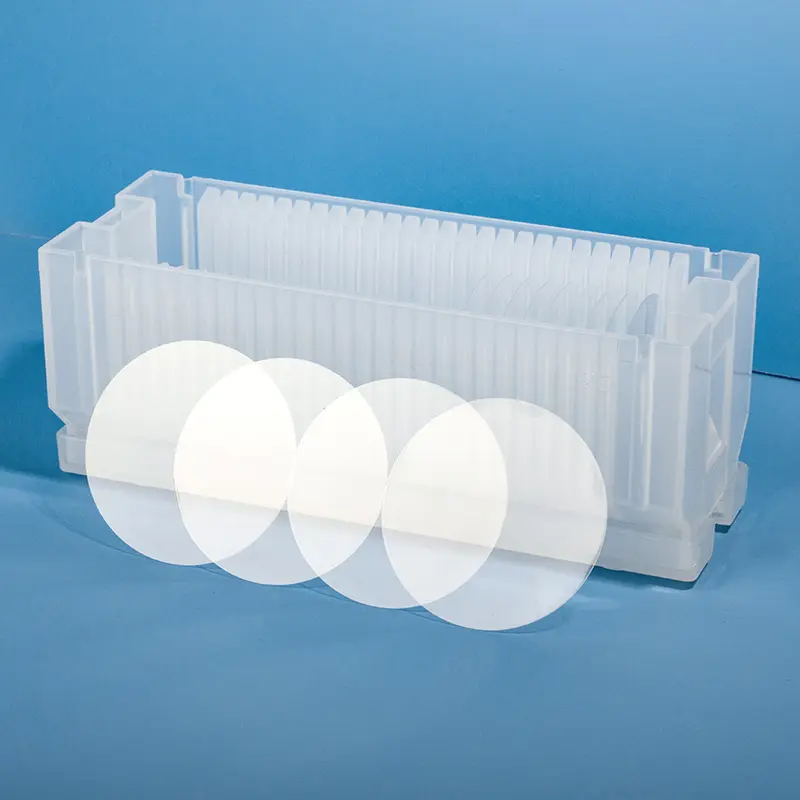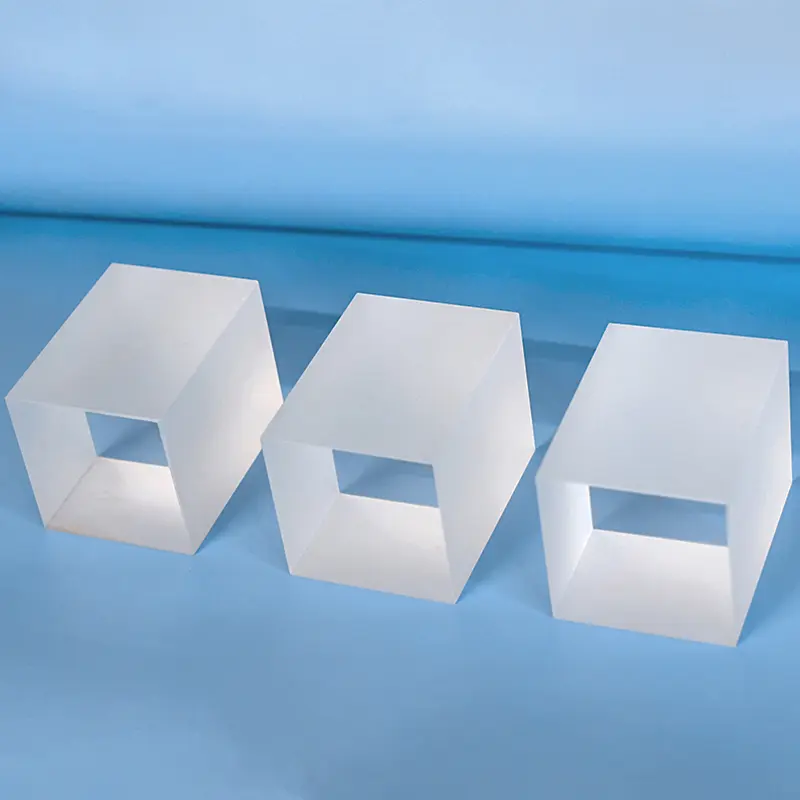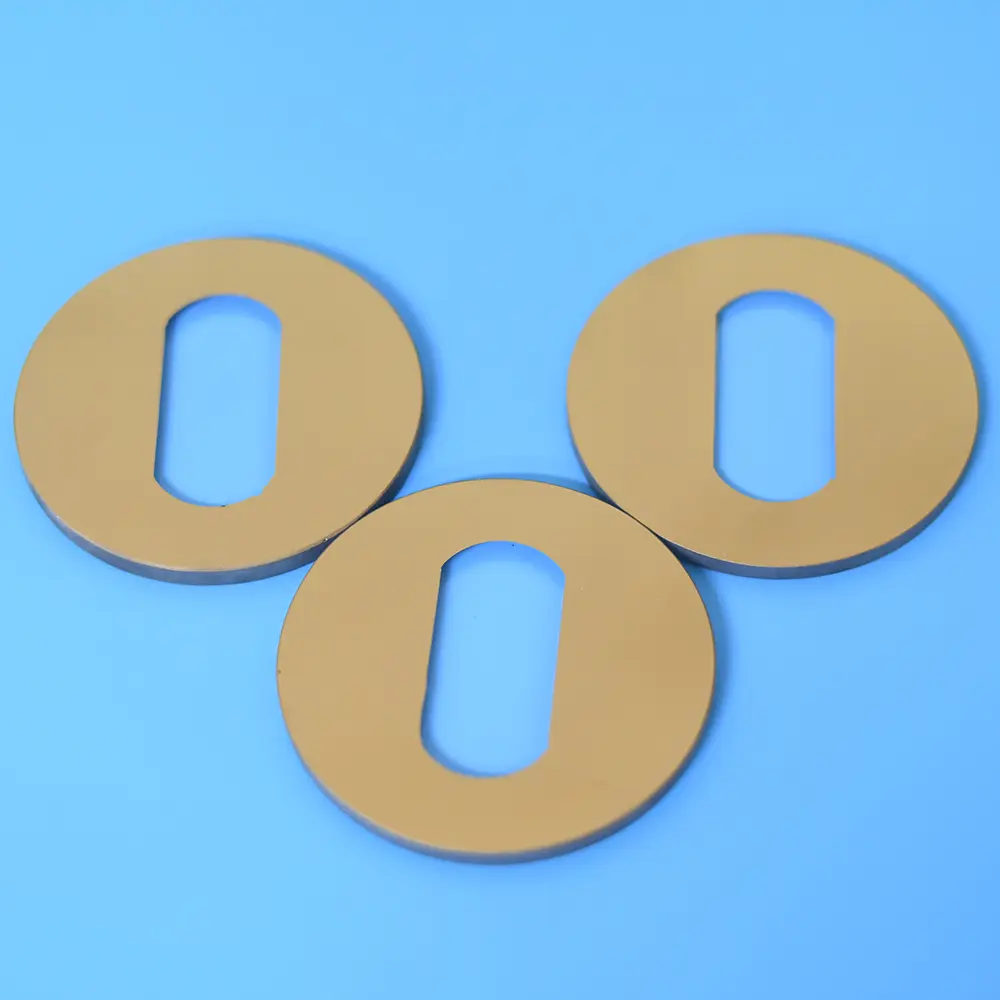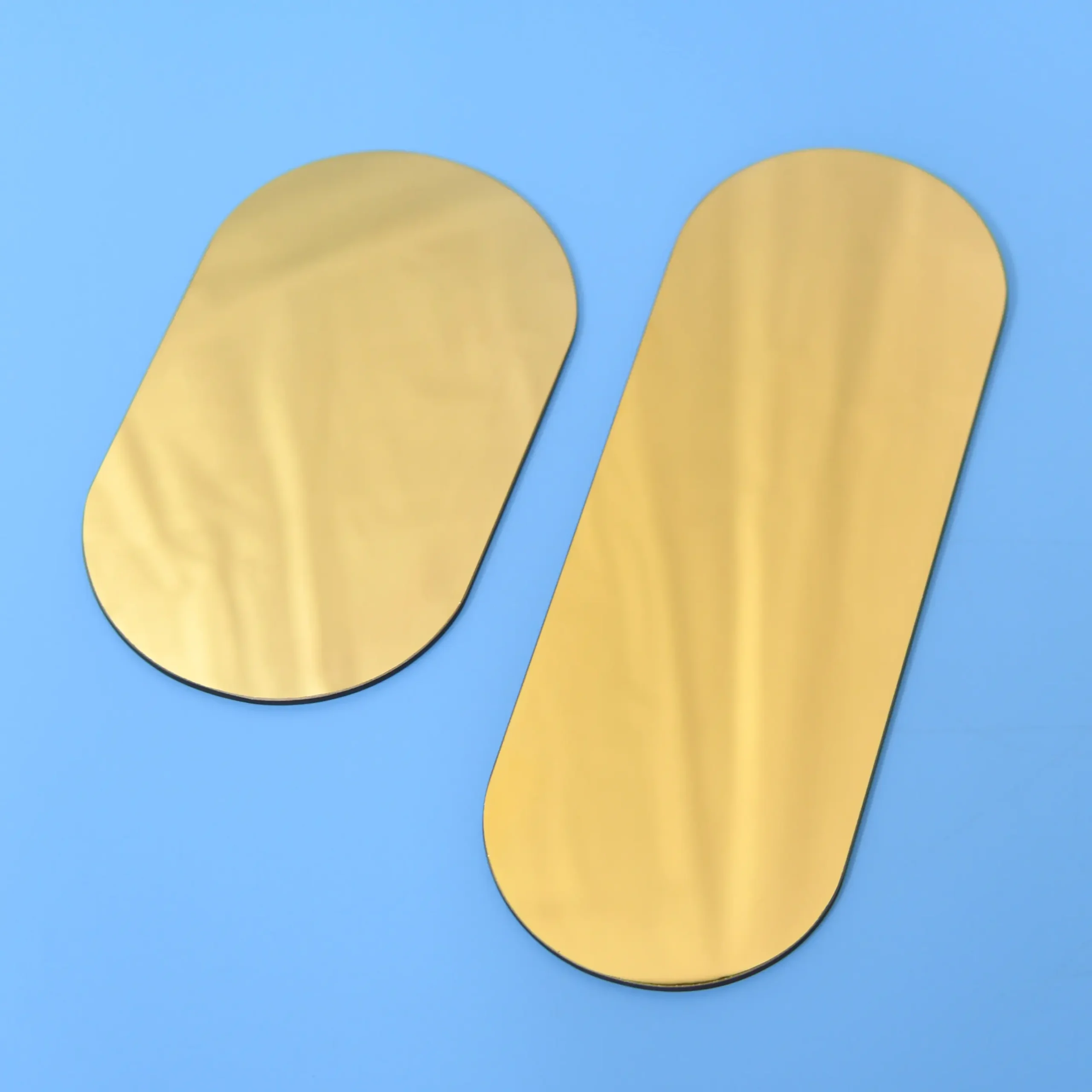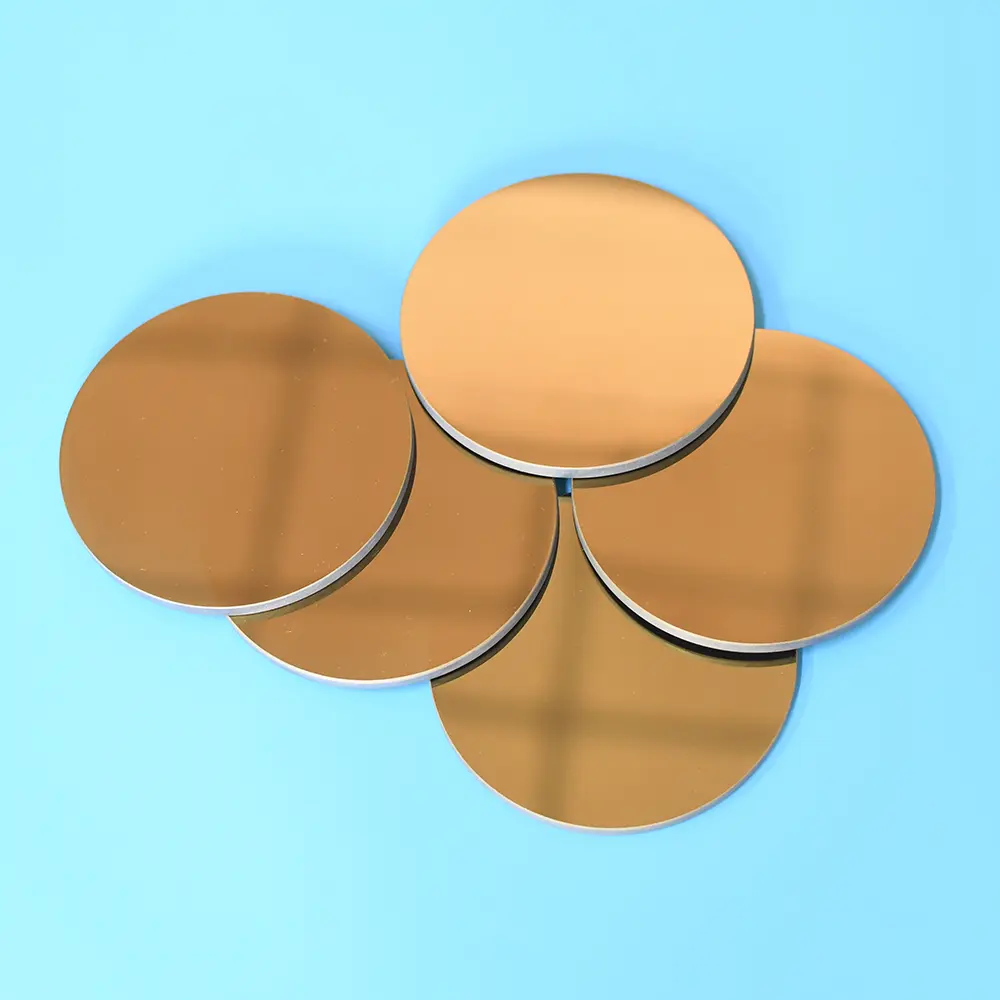A quartz custom window is an observation window made primarily from quartz glass, which is fabricated into various shapes and specifications according to specific application requirements.
| 속성 콘텐츠 | 속성 값 |
|---|---|
| SiO2 | 99.99% |
| 밀도 | 2.2×10³ kg/cm³ |
| 경도 | 5.5 - 6.5 모스 스케일 570 KHN 100 |
| 인장 강도 | 4.8×10⁷ Pa(N/mm2)(7000psi) |
| 압축 강도 | >1.1×10⁹ Pa(160,000psi) 이상 |
| 열팽창 계수 | 5.5×10-⁷ cm/cm-°C(20°C-320°C) |
| 열 전도성 | 1.4W/m-°C |
| 비열 | 670 J/kg-°C |
| 연화 포인트 | 1730°C(3146°F) |
| 어닐링 포인트 | 1210°C(2210°F) |
| 스트레인 포인트 | 1120°C(2048°F) |
| 작업 온도 | 1200°C(2192°F) |
| 전기 저항 | 7×10⁷ 옴 cm(350°C) |
| 크기 | 사용자 지정 |
| 로고 | 맞춤형 로고 수락 |
고온 내성
Quartz custom windows can withstand extremely high temperatures, with a softening point around 1730°C. They can be used continuously at 1100°C and can tolerate short-term temperatures up to 1450°C.
화학적 안정성
Except for hydrofluoric acid, quartz custom windows are highly resistant to chemical reactions with almost all acids, exhibiting exceptional chemical stability.
Thermal Stability
Quartz custom windows have a very low thermal expansion coefficient, enabling them to withstand dramatic temperature changes. They can endure large temperature differences repeatedly within a short period without cracking.
Optical Performance
Quartz custom windows exhibit good light transmission across the entire spectrum from ultraviolet to infrared. They have a visible light transmission rate above 93%, with higher transmission rates, up to 80% or more, particularly in the ultraviolet range.
애플리케이션 시나리오
Optical and Light Source Industries
Quartz custom windows, due to their high heat resistance, corrosion resistance, and low thermal expansion, are widely used in the optical field for manufacturing telescope lenses, laboratory optical equipment, communication devices, diffractive lenses, projection displays, scanning equipment, printer optical components, and also in cameras and ultra-flat television screens.
Optical Fiber Communication Industry
Quartz glass is a primary raw material for optical fibers, and its high purity ensures the signal quality of optical fibers. Quartz glass is extensively used in the production of optical fiber rods and drawing processes, guaranteeing high performance and stability of optical fibers.
Photovoltaic Industry
In the photovoltaic field, quartz glass is used as a rigid consumable material in photovoltaic modules, greatly increasing photoelectric conversion efficiency. Quartz crucibles made from quartz glass are used as containers for melting polycrystalline silicon, for the subsequent process of pulling single-crystal silicon rods or multi-crystal silicon ingots.
The primary material of quartz custom windows is high-purity quartz glass, which possesses unique physical properties including extremely high-temperature resistance (capable of continuous use at 1100°C and short-term exposure up to 1450°C), excellent optical transmission (particularly in the ultraviolet range), an extremely low thermal expansion coefficient, and outstanding chemical stability. These characteristics make them highly desirable in a variety of industrial applications.
Quartz custom windows exhibit exceptionally high resistance to most chemicals, except for hydrofluoric acid and hot phosphoric acid. This makes them highly suitable for chemical laboratories, chemical production, and other applications where corrosion-resistant viewports are required.
The advantages of quartz custom windows in optical applications stem from their high transparency and broad spectral transmission, enabling excellent light transmission across the entire spectrum from ultraviolet to infrared. This feature is critical for applications requiring high clarity and precise control of light, such as in high-end optical instruments, optical fiber communication, and research equipment.
자주 묻는 질문
석영 유리는 우수한 물리적 및 화학적 특성, 매우 높은 기계적 경도, 우수한 전기 절연성, 고온 및 내식성, 낮고 안정적인 지연 성능, 우수한 빛 투과율 등을 갖춘 단단하고 부서지기 쉬운 소재입니다. 반도체, 광학, 전기, 화학, 항공우주, 자동차 및 기타 분야에서 널리 사용됩니다. 단단하고 부서지기 쉬운 재료는 가공이 어렵고 많은 분야에서 가장자리 붕괴가 적고 재료 손실이 적으며 단면 거칠기가 낮고 절단 두께 범위가 넓은 절단 공정이 절실히 필요합니다. 석영 유리의 전통적인 절단 방법은 기계식 절단, 즉 휠 절단입니다. 비 전통적인 절단 방법에는 워터젯 절단, 전기 화학 방전 와이어 절단, 연속 레이저 절단 등이 포함됩니다. 기계식 절단은 비용이 저렴하지만 휠과 재료 사이의 접촉으로 인해 공구 마모가 크고 재료가 공구에 의해 쉽게 오염됩니다. 석영 유리는 가장자리 붕괴, 미세 균열 및 잔류 응력이 발생하기 쉬우므로 재료의 강도와 성능에 영향을 미칩니다! 곡선 절단이 어렵고 연마 및 연마와 같은 후처리가 필요합니다. 레이저 절단은 재료에 직접 접촉하지 않고 접촉 응력이 없으며 복잡한 곡선 절단을 수행할 수 있습니다. 피코초 레이저는 작은 스폿 직경, 고정밀, 재료와의 짧은 작용 시간, 작은 작용 면적의 장점을 가지고 있으며 단단하고 부서지기 쉬운 재료의 가공에 적합합니다.
。

